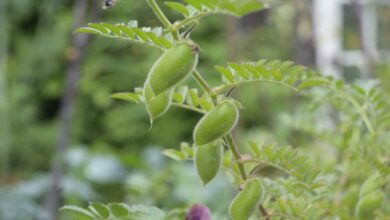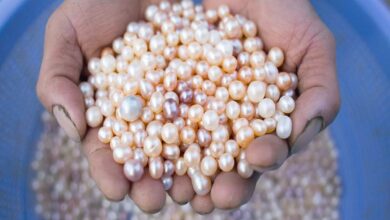Cultivation of roses: These are some guidelines to follow if you want to grow roses as well
Cultivation of roses: The rose is known by its scientific name, Rosa rubiginosa. The genus Rosa has around 360 species, and roses are members of the Rosaceae family. For generations, gardeners have been enthralled by roses because of their captivating scent and breathtaking hues. For home gardeners as well as professional producers, rose cultivation is very important.

Advantages of Rose Production
Beyond only having beautiful blooms, growing roses has many other advantages. Planting roses may help you connect with nature and be therapeutic and stress-relieving. You may also make exquisite flower arrangements for yourself or as gifts by cultivating roses, which will spruce up any area and provide a hint of elegance and smell.
There is always something fresh and fascinating to discover in your garden because to the wide variety of rose types that are available. Roses are beautiful, but they are also useful in a variety of sectors. Cultivating superior Rose cultivars is crucial to the profitable business of producing essential oils from roses. Additionally, by drawing pollinators to the garden, rose cultivation enhances biodiversity. This promotes the health of ecosystems and advances environmental sustainability in general.
Top Rose Varieties
Roses come in a variety of varieties, each having special qualities and advantages of its own. Hybrid tea roses, which are well-known for their big blooms and strong scents, are among the preferred options. Clusters of smaller flowers with abundant blooms throughout the season are provided by Floribunda Roses.
Grandiflora Roses provide a traditional touch while requiring little maintenance. Miniature roses work well in containers or tiny places, but climbing roses are the finest option for adding vertical appeal to your farm or garden.
Preparing the Land
A crucial first step in guaranteeing effective farming is preparing the land. For your rose garden, start by choosing a spot that receives plenty of sunshine and good drainage. Roses need full light to flourish; therefore, site selection is crucial. Remove any weeds or debris from the area that can impede the development of your roses.
In order to promote healthy root growth, the soil must be properly prepared. Make sure the soil is rich in organic matter and has sufficient drainage. testing the soil to determine its pH and nutrient content. This will assist you in determining the right amount of fertilizer and soil additives for the best possible development for roses.
Perfect Soil and Climate
Roses thrive best in areas that get plenty of sunlight—ideally six hours or more every day. They need rich, organic matter-containing soil. Climate-wise, roses thrive in areas with mild summers and moderate temperatures overall. They may suffer in very hot or frosty environments, although they can withstand certain freezing weather. Choosing a location with adequate air circulation is crucial to halting the spread of illnesses.
In terms of soil needs, roses grow best in pH ranges of 6.0 to 7.0, which is slightly acidic to neutral. Because sandy loam soil types allow for adequate plant drainage, they are perfect for growing roses. Consider testing the pH and nutritional content of the soil before starting your rose garden. This will assist you in making any necessary adjustments prior to planting your rose plants in the ground.
A crucial first step in guaranteeing effective farming is preparing the land. For your rose garden, start by choosing a spot that receives plenty of sunshine and good drainage. Roses need full light to flourish; therefore, site selection is crucial. Remove any weeds or debris from the area that can impede the development of your roses.
In order to promote healthy root growth, the soil must be properly prepared. Make sure the soil is rich in organic matter and has sufficient drainage. testing the soil to determine its pH and nutrient content. This will assist you in determining the right amount of fertilizer and soil additives for the best possible development for roses.
Rose Planting Techniques
For your Rose plants, start by choosing a sunny spot with well-draining soil. To avoid illnesses, make sure there is enough air circulation in the space. Carefully dig a hole that is slightly deeper and twice as broad as the root ball of your rose plant. Before inserting the plant roots into the hole, gently loosen them. Backfill with soil that has been combined with old manure or compost. To aid in settling the soil around the roots, water after planting.
The base of the rose plant should be mulched to keep moisture in and keep weeds at bay. To avoid rotting, don’t forget to allow some space between the mulch and the stem. For climbing, think about adding support systems like trellises or posts. Make sure your newly planted roses get enough water without becoming soggy by checking on them often.
Watering and Managing Irrigation
Rose plants need careful watering control to flourish to their full potential. Roses need a constant moisture content to grow well, but too much irrigation might cause root rot. It’s critical to balance the frequency of watering according to the weather. It’s preferable to water thoroughly rather than shallowly while growing roses. Plants become more robust during dry times as a result of their roots being able to grow deeper into the soil.
Water may be effectively delivered to the roots while avoiding evaporation by using soaker hoses or drip irrigation. Roses may need more regular watering during the hot summer months than they do during the colder months. Healthy rose bushes need continuous observation of your plants and modification of your watering regimen.
Requirements for Fertilizer and Nutrients
Roses are heavy feeders, meaning that they need consistent nutrition to be healthy. The elements nitrogen, phosphorus, and potassium, or N, P, and K, are necessary for the proper development of roses. Roses may benefit from organic fertilizers since they gradually release nutrients into the soil. You may also use inorganic fertilizers made especially for roses, following the directions on the packaging.
Avoid overfertilizing, as this might cause excessive development of foliage at the price of flowering. To make sure your roses get enough nutrients without being overfed with chemicals, you must take a balanced approach. Maintaining the health and vigor of your rose plants throughout the growing season may be achieved by keeping a close eye on their condition and making necessary adjustments to fertilization procedures.
Pruning and Training
Make neat cuts at a 45-degree angle above the outward-facing buds while trimming the rose plant. By promoting airflow and sunshine penetration, this approach lowers the risk of illness. To keep plants vigorous, remove defective wood on a regular basis. In order to keep canes from bowing under the weight of blooms, training roses entails attaching them to supports. For improved bloom output, train climbing roses in a horizontal fashion along trellises. Shaping bush roses involves removing dead wood and promoting new growth from the root.
Controlling Insect and illnesses
The following common pests may harm roses: spider mites, thrips, aphids, and Japanese beetles. If these little invaders are not properly controlled, they might harm your lovely blossoms. Diseases including botrytis blight, black spot, and powdery mildew may also affect roses. Over time, these fungal diseases may weaken the plants and reduce their ability to produce flowers.
Reducing insect infestations and disease outbreaks may be achieved by using preventative measures such sufficient ventilation, spacing plants appropriately, and routine monitoring. Eco-friendly methods of pest management that don’t damage beneficial insects in your garden are organic alternatives. When used as directed, sulfur-based fungicides or copper sprays may be useful treatments for fungal problems.
Methods of Weed Control
In rose farming, weed management is essential to the health and development of the plants. Shredded wood chips or straw may be used as mulch to help prevent weeds from growing around roses. Hand-weeding on a regular basis works well at getting rid of weeds without damaging rose plants. Herbicides made especially for rose gardens may be used; nevertheless, always carefully read the directions to prevent harm to your priceless blooms.
Recall that attempting more natural ways of weed management should come before using chemical ones. To stop weeds from spreading, keep your yard tidy by getting rid of any garbage that might provide a breeding ground for them. When you consistently control weeds in your garden, you’ll see stronger, more colorful roses that blossom brilliantly.
Rose Harvesting
For best quality, roses must be harvested at the appropriate time. Because they will continue to expand after cutting, choose flowers that are still in the bud stage but have some color showing. Make diagonal cuts above a leaf node using pruning shears. Roses are best harvested in the early morning or late afternoon, when their water content is at its peak. To keep gathered roses from drooping and becoming dehydrated, immediately place them in a bucket of warm water. Any plant leaves that will be in contact with water should be removed since they may promote the development of bacteria.
Management and Storage
After the roses are plucked, proper care and storage are crucial to preserving their freshness. To prevent any damage that might shorten their shelf life or ruin their beauty, they must be handled carefully. Before preserving the roses, remove any wilted or damaged blossoms. To keep the stems moist, cut them off at an angle and submerge them right away in clean water.
Roses should be stored in a cool place away from drafts and direct sunlight. Because refrigeration slows down the aging process, it may also help extend their vase life. To help the roses absorb water more effectively, change the water every few days and trim the stems from time to time. Preservatives for flowers may also be used to help them last longer.
Average Rose Yield
Rose production is influenced by a number of variables, including soil quality, climate, irrigation techniques, and plant care. A well-kept rose plant may provide anywhere from 50 to 100 blooms in a single growing season. However, depending on a variety of factors, this figure may change. To maximize the output of your rose plants, you must constantly check them and make necessary modifications.
The final production of roses on your farm is also greatly influenced by elements including timely harvesting, sufficient sunshine exposure, and appropriate trimming methods. You may maximize your rose output for a great harvest by using best practices and maintaining consistency with care routines throughout the growing season.
Advice for Growing Rose Buds and Size
Make sure there is enough sunshine available. Roses need six to eight hours of sunshine a day to grow. Next, think about routinely trimming your rose plants. Pruning encourages new growth and frees up energy for the creation of flowers. A balanced fertilizer will also promote strong foliage and a profusion of blossoms on your roses. Avoid overfertilizing rose plants, as this may result in an excessive amount of leaf development at the price of blossoms.
Mulching the area around your rose bushes may also aid with temperature regulation, weed suppression, and soil moisture retention—all of which improve blossom development. Do not overlook routine watering. Maintaining steady moisture levels is essential for strong plant health and colorful flowers. Pay close attention to avoid tension or withering of your priceless roses.
Promotion and Sales of Roses
Selling straight to neighborhood supermarkets or florists that appreciate locally produced, fresh flowers is one way to go about this. Developing a rapport with these companies may result in frequent sales opportunities. To reach a larger audience, you may also think about opening a roadside kiosk or taking part in farmers’ markets.
By making eye-catching displays and providing distinctive Rose varieties, you may draw in clients who are searching for something exceptional. Online marketplaces, e-commerce websites, and flower delivery services provide more ways to connect with prospective customers beyond of your own neighborhood.
Maintenance and Care
Focus on cutting diseased or dead branches in the spring, feeding to encourage new growth, and keeping an eye out for early insect or disease symptoms. As summer draws near, remember to provide your roses with enough water during hot weather and shade from direct sunshine. Deadhead-waste flowers often encourage ongoing blossoming.
Reduce the frequency of your rose plants’ autumn watering and cover the base of the plants with a layer of mulch to shield the roots from freezing temperatures. While winter is a season of relaxation, don’t forget to frequently check on your roses to see if they are showing any symptoms of stress from the severe weather or frost. Adequate shelter during winter may guarantee robust regrowth come springtime.
Eco-Friendly and Sustainable Methods
Using organic techniques improves the quality of the roses produced while also helping the environment. The essential technique is to enrich the soil naturally, without the use of hazardous chemicals, using compost and manure. This encourages healthier soil and greater rose plant development. Integrated pest management is an additional strategy that uses helpful insects rather than chemicals to organically control pests. This technique reduces the use of chemicals while preserving the ecosystem’s equilibrium.
Crop rotation is also a good way to reduce disease in rose bushes and stop soil erosion. Using organic and sustainable methods guarantees a better environment and yields premium roses that are valued by customers who care about the environment. Having gorgeous blossoms in your yard is one of the many pleasures of cultivating roses. You may effectively grow lovely roses in your garden or on your farm by using these guidelines.





